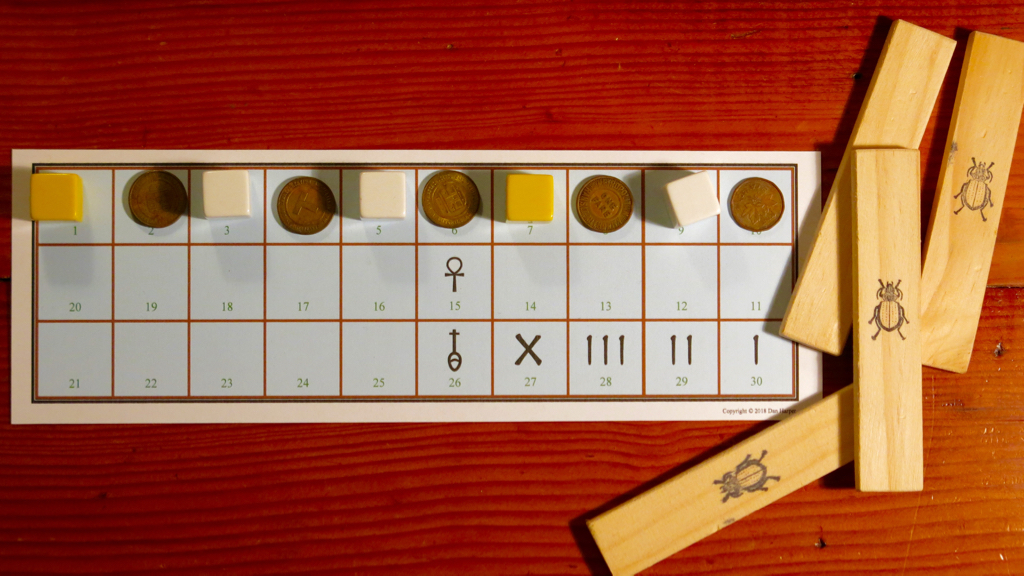Quite a few years ago, when I was visiting the Museum of Fine Arts in Boston (MFA), I saw the ancient Egyptian board game Senet made out of faience (a type of pottery) and wood. Scholars and board-game-lovers have invented modern rules for Senet, based both on ancient Egyptian depictions of people playing Senet and on the several surviving copies of the game. I’ve read through several modern reconstructions of the game, but all the modern rules seem overly complicated. I wanted a set of rules that would be easy for school aged children to learn.
This week I came up with a simple set of rules, rules which remain fairly consistent with what is actually known about the game but are easily learned by school-aged children. The rules are below the fold.
The interesting thing about Senet is that it can be understood to represent the journey of the ba (roughly equivalent to soul) after death through the underworld to some kind of eternal life — it’s not just a game, it’s religion! Some day, I’ll write a lesson plan that ties Senet to ancient Egyptian religion. In the mean time, it’s still a fun game.
Above: The game board I made, printed out and trimmed to size. I used whatever I had around the house for playing pieces — 5 light-colored cubes, and 5 coins (mostly old Boston subway tokens). I made throwing sticks out of some pieces of wood I happened to have (popsicle sticks would work better), and I used a rubber stamp to put an Egyptian scarab beetle on one side so each stick has one clear side and one marked side.
Rules for playing Senet follow…. Continue reading “Senet, an ancient Egyptian game”

